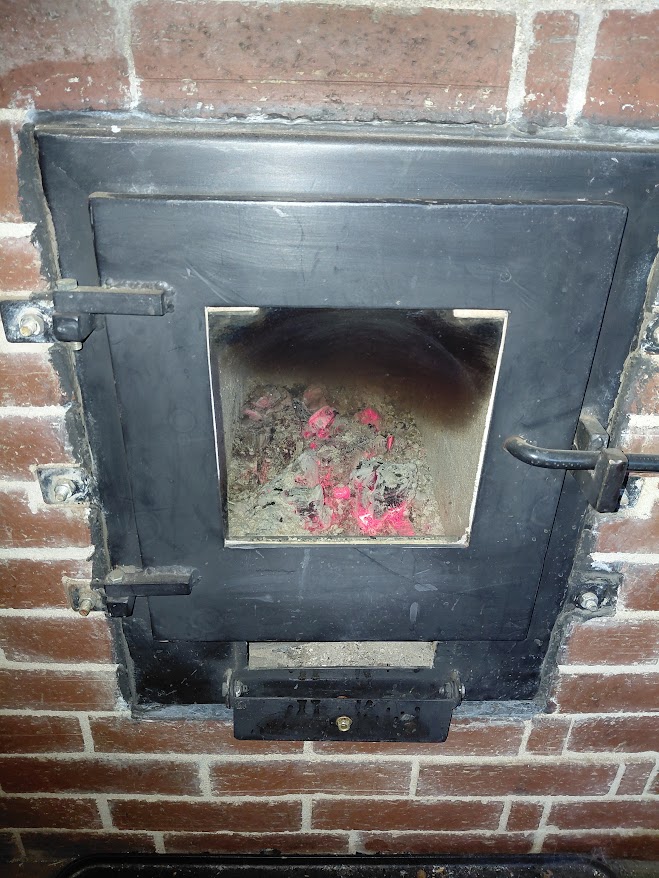

 19
19




![Filename: 20251023_062624.jpg
Description: [Thumbnail for 20251023_062624.jpg]](/t/361932/a/276770/20251023_062624.jpg)
For all your Montana Masonry Heater parts (also known as) Rocket Mass heater parts.
Visit me at
dragontechrmh.com Once you go brick you will never go back!
 10
10




Also easy if your fire is coaled out...
My batchbox doors have a closable primary intake
This is less obvious. There's a high possibility that ours will have more than one person operating it, and I wouldn't want to find out the hard way that the secondary tube stayed plugged.the secondary tube can be plugged with superwool.
Visit Redhawk's soil series: https://permies.com/wiki/redhawk-soil
How permies.com works: https://permies.com/wiki/34193/permies-works-links-threads




 13
13




For all your Montana Masonry Heater parts (also known as) Rocket Mass heater parts.
Visit me at
dragontechrmh.com Once you go brick you will never go back!

 4
4




Tradition is not the worship of ashes, but the preservation of fire.




 10
10




For all your Montana Masonry Heater parts (also known as) Rocket Mass heater parts.
Visit me at
dragontechrmh.com Once you go brick you will never go back!
 10
10








 13
13






![Filename: 20251024_085710.jpg
Description: [Thumbnail for 20251024_085710.jpg]](/t/361932/a/276849/20251024_085710.jpg)
For all your Montana Masonry Heater parts (also known as) Rocket Mass heater parts.
Visit me at
dragontechrmh.com Once you go brick you will never go back!
 6
6




Become extra-civilized!




 13
13




For all your Montana Masonry Heater parts (also known as) Rocket Mass heater parts.
Visit me at
dragontechrmh.com Once you go brick you will never go back!
 4
4




thomas rubino wrote:The tighter the seal the better it will work.
You could fold up some foil to cover the feed and place your firebricks over that.
I suspect both piped mass and a strat chamber are very similar in heat loss, if allowed to draft.
A piped mass might flow better, but by volume, it is tiny,
A strat chamber is huge in comparison.
Ultimately, both rise through a vertical chimney pipe.
Become extra-civilized!
 6
6




 7
7




Life on a farm is a school of patience; you can't hurry the crops or make an ox in two days.
Henri Alain




 15
15




![Filename: 20251028_135447.jpg
Description: [Thumbnail for 20251028_135447.jpg]](/t/361932/a/277184/20251028_135447.jpg)
![Filename: 20251028_135507.jpg
Description: [Thumbnail for 20251028_135507.jpg]](/t/361932/a/277185/20251028_135507.jpg)
![Filename: 20251028_135604.jpg
Description: [Thumbnail for 20251028_135604.jpg]](/t/361932/a/277186/20251028_135604.jpg)
![Filename: 20251028_135552.jpg
Description: [Thumbnail for 20251028_135552.jpg]](/t/361932/a/277187/20251028_135552.jpg)
For all your Montana Masonry Heater parts (also known as) Rocket Mass heater parts.
Visit me at
dragontechrmh.com Once you go brick you will never go back!
 5
5




Glenn Herbert wrote:I agree that a ducted mass would continuously lose heat with any amount of residual draft. I think a stratification chamber would be more dependent on details of the configuration. If the combustion core exit (riser top or secondary chamber exit port) is near the top of the stratification chamber, then it will be introducing cooler air and diluting all the stratified hot air remaining. If the core exit is low in the stratification chamber, it can move more directly to the chimney exit and leave the hot upper part of the chamber undisturbed. This is assuming that draft is restricted from full burn-time flow and does not "jet" at all.

|
She laughed at how small it was, and now it is even smaller. Poor tiny ad:
The new gardening playing cards kickstarter is now live!
https://www.kickstarter.com/projects/paulwheaton/garden-cards
|





